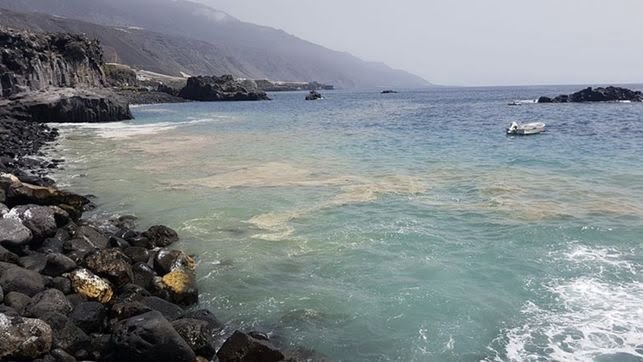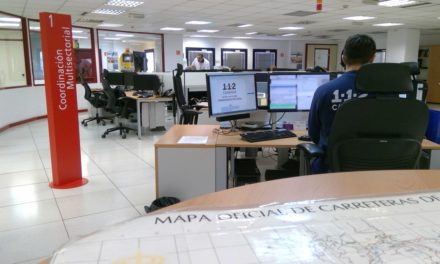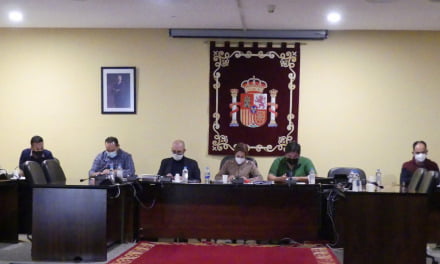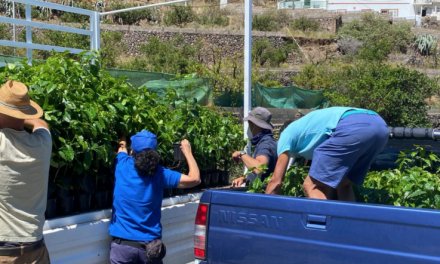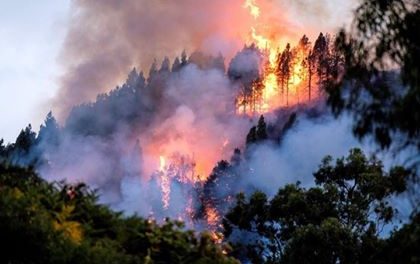 The Canary Islands Government have announced that this summer they plan to introduce a specialised boat for the collection of foam around bathing areas that can appear due to algae blooms. The vessel is a patent of an Andalusian company and will be used for the first time in Spain for this purpose.
The Canary Islands Government have announced that this summer they plan to introduce a specialised boat for the collection of foam around bathing areas that can appear due to algae blooms. The vessel is a patent of an Andalusian company and will be used for the first time in Spain for this purpose.
The Regional Minister for Territorial Policy, Sustainability and Security, Nieves Lady Barreto, made the announcement in Parliament after reporting that the Directorates General of Nature Protection and Public Health are maintaining an alert system to detect and analyse the possible appearance of algae blooms on the coasts.
“There is an internal work protocol between the two directorates-general, the presence of foams with strange colors or the colouration of seawater are signs that trigger the collection of samples by beach guards or Public Health inspectors,” explained Barreto, according to the Ministry.
These samples are sent to the Spanish Algae Bank (BEA), who partner the Vice-Ministry of the Environment in the MIMAR project (INTERREG Project).
Within the framework of this project, the BEA and Vice-council technicians periodically review a network of stations distributed throughout the archipelago to detect toxic algal blooms.
In addition, helicopters from the Emergency and Rescue Group (GES), attached to the General Directorate of Security and Emergencies of the Government of the Canary Islands, are involved in the early detection of toxic algal blooms; the 112 service and the RedPROMAR (marine network), the citizen science network of the Vice-Ministry of the Environment that allows for detection of foam or “red tides” by means of citizen reporting.
The proceedure with massive blooms of microalgae consists of coordinating the taking of samples, which are sent for study at the Spanish Bank of Algae (BEA), a partner of the MIMAR project led by the Vice-Ministry of the Environment, where it is characterised (determination of present species, observed densities) and a report is issued with the results of the analysis.
When these results show that the type of flowering observed might have effects on health, this is reported from the General Directorate of Nature Protection to the General Directorate of Public Health and a copy of the report is transferred to them.
Likewise, this information is transferred to the General Directorate of Security and Emergencies and, when it comes to species that may compromise the quality of fishery resources, also to the Directorate General of Fisheries.
The General Directorate of Public Health has competence regarding the decisions to be taken in bathing areas, and the governments work in these events is monitoring.
Therefore, from the earliest beginning of an event, a monitoring program has been set up, together with the Offices of the Marine Reserves, observers of the RedPROMAR, the Integral Service of Marine Technology (SITMA) of the University of Las Palmas de Gran Canaria and the helicopters of the Emergency and Rescue Group (GES), attached to the General Directorate of Security and Emergencies of the Government of the Canary Islands.
The technicians explained that given the agitation of the waves on the coast, dissolved salts and organic matter from the sea capture microbubbles and form foams that can be observed along the coastline, in areas with greatest exposure to waves, without this necessarily suppossing an indicator of contamination.
The minister added that winter foams have not ever been associated with toxic algal blooms.
As for the summer, and only if the phenomenon occurs, the Deputy Ministry of Environment will implement the planned action protocols, accompanied by informative material for placement at beaches and coastal bathing areas, in addition to continuing with the operations described and that they have been operating for two years now.
The minister also pointed out that an agreement is to be signed for this period with the ULPGC for the global study of the dynamics of oceanic algal blooms and thus be able to create an early warning system based on ocean remote sensing.

